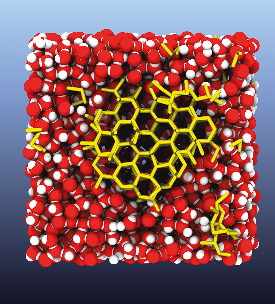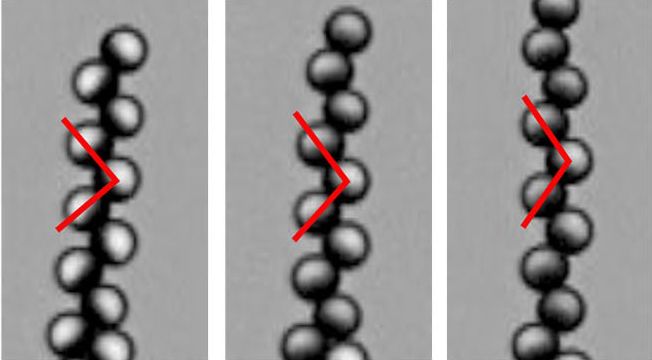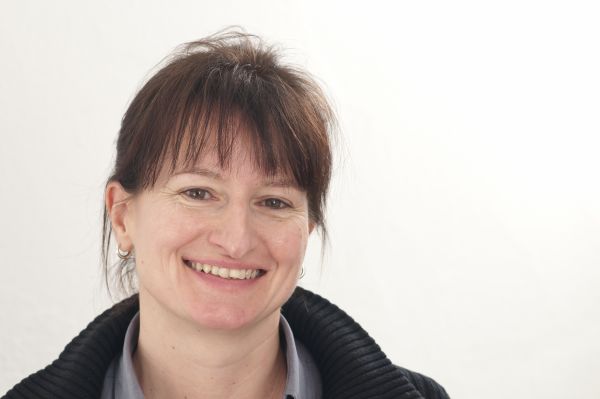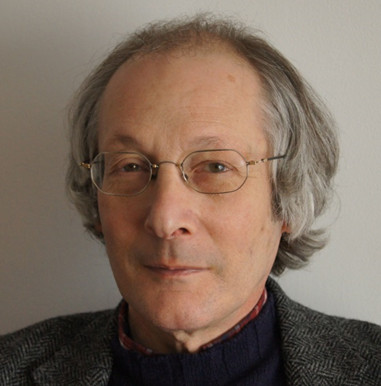News
EPJ E Review - Watching crystals grow
- Details
- Published on 08 August 2016

© Philipp Geiger
Crystallization, a typical self-organization process during which a disordered state spontaneously transforms into an ordered one, a crystal, usually proceeds by nucleation and growth. In the initial stages of the transformation, a localized nucleus of the new phase forms due to a random fluctuation. Most of these small nuclei disappear after a short time, but in some rare cases a crystalline embryo may reach a critical size, after which further growth becomes thermodynamically favorable and the entire system is converted into the new phase.
In this EPJ E review paper, Jungblut and Dellago discuss several theoretical concepts and computational methods to better understand crystallization. More specifically, they address the rare event problem arising in the simulation of nucleation processes, and explain how to calculate nucleation rates accurately. Particular emphasis is placed on discussing statistical tools to analyze crystallization trajectories and identify the transition mechanism.
EPJ Plus Highlight - Improving safety of neutron sources
- Details
- Published on 25 July 2016

Testing liquid metals as target material bombarded by high-energy particles
There is a growing interest in the scientific community in a type of high-power neutron source that is created via a process referred to as spallation. This process involves accelerating high-energy protons towards a liquid metal target made of material with a heavy nucleus. The issue here is that scientists do not always understand the mechanism of residue nuclei production, which can only be identified using spectrometry methods to detect their radioactive emissions. In a new study examining the radionuclide content of Lead-Bismuth-eutectic (LBE) targets, scientists at the Paul Scherrer Institute Villigen (PSI) found that some of the radionuclides do not necessarily remain dissolved in the irradiated targets. Instead, they can be depleted in the bulk LBE material and accumulate on the target's internal surfaces. These findings have recently been published in EPJ Plus by Bernadette Hammer-Rotzler affiliated with the PSI and the University of Bern, Switzerland, and colleagues from Switzerland, France and Sweden. The results improve our understanding of nuclear data related to the radionuclides stemming from high-power targets in spallation neutron sources. They contribute to improving the risk assessment of future high-power spallation neutron beam facilities --including, among others, the risk of erroneous evaluation of radiation dose rates.
EPJ C Highlight - Better defining the signals left by as-yet-undefined dark matter at the LHC
- Details
- Published on 22 July 2016

New theoretical models that better describe the interaction between dark matter and ordinary particles advance the quest for dark matter
In the quest for dark matter, physicists rely on particle colliders such as the LHC in CERN, located near Geneva, Switzerland. The trouble is: physicists still don't exactly know what dark matter is. Indeed, they can only see its effect in the form of gravity. Until now, theoretical physicists have used models based on a simple, abstract description of the interaction between dark matter and ordinary particles, such as the Effective Field Theories (EFTs). However, until we observe dark matter, it is impossible to know whether or not these models neglect some key signals. Now, the high energy physics community has come together to develop a set of simplified models, which retain the elegance of EFT-style models yet provide a better description of the signals of dark matter, at the LHC. These developments are described in a review published in EPJ C by Andrea De Simone and Thomas Jacques from the International School for Advanced Studies SISSA, in Trieste, Italy.
EPJ E Highlight - Asymmetrical magnetic microbeads transform into micro-robots
- Details
- Published on 19 July 2016

Thanks to the ordering effects of two-faced magnetic beads, they can be turned into useful tools controlled by a changing external magnetic field
Janus was a Roman god with two distinct faces. Thousands of years later, he inspired material scientists working on asymmetrical microscopic spheres - with both a magnetic and a non-magnetic half - called Janus particles. Instead of behaving like normal magnetic beads, with opposite poles attracting, Janus particle assemblies look as if poles of the same type attract each other. A new study reveals that the dynamics of such assemblies can be predicted by modelling the interaction of only two particles and simply taking into account their magnetic asymmetry. These findings were recently published in EPJ E by Gabi Steinbach from the Chemnitz University of Technology, Germany, and colleagues at the Helmholtz-Zentrum Dresden-Rossendorf. It is part of a topical issue entitled "Nonequilibrium Collective Dynamics in Condensed and Biological Matter." The observed effects were exploited in a lab-on-a-chip application in which microscopic systems perform tasks in response to a changing external magnetic field.
EPJ C Highlight - Surprising neutrino decoherence inside supernovae
- Details
- Published on 12 July 2016

Theory to explain collective effects of neutrinos inside supernovae strengthened
Neutrinos are elementary particles known for displaying weak interactions. As a result, neutrinos passing each other in the same place hardly notice one another. Yet, neutrinos inside a supernova collectively behave differently because of their extremely high density. A new study reveals that neutrinos produced in the core of a supernova are highly localised compared to neutrinos from all other known sources. This result stems from a fresh estimate for an entity characterising these neutrinos, known as wave packets, which provide information on both their position and their momentum. These findings have just been published in EPJ C by Jörn Kersten from the University of Bergen, Norway, and his colleague Alexei Yu. Smirnov from the Max Planck Institute for Nuclear Physics in Heidelberg, Germany. The study suggests that the wave packet size is irrelevant in simpler cases. This means that the standard theory for explaining neutrino behaviour, which does not rely on wavepackets, now enjoys a more sound theoretical foundation.
Regine von Klitzing wins the 2016 EPJE Pierre-Gilles de Gennes Lecture Prize
- Details
- Published on 12 July 2016

The EPJE editors are pleased to announce that this year’s edition of the EPJE Pierre-Gilles de Gennes Lecture Prize goes to German physicist Regine von Klitzing. Von Klitzing was nominated for her important contributions to polymer physics, particularly concerning the structure of polyelectrolyte assemblies and functionalized/responsive microgels. The EPJE Pierre-Gilles de Gennes lecture will be delivered by von Klitzing in Grenoble, France, during the 4th International Soft Matter Conference which takes place from 12 to 16 September 2016.
EPJ B Highlight - How cooperation emerges in competing populations
- Details
- Published on 06 July 2016

New theoretical approach to understand the dynamics of populations reaching consensus votes or of spreading epidemics
Social behaviour like reaching a consensus is a matter of cooperation. However, individuals in populations often spontaneously compete and only cooperate under certain conditions. These problems are so ubiquitous that physicists have now developed models to understand the underlying logic that drives competition. A new study published in EPJ B shows the dynamics of competing agents with an evolving tendency to collaborate that are linked through a network modelled as a disordered square lattice. These results are the work of Chen Xu from Soochow University, Suzhou, China and colleagues. They believe that their theoretical framework can be applied to many other problems related to understanding the dynamical processes in complex systems and networked populations, such as the voter dynamics involved in reaching a consensus and spreading dynamics in epidemic models and in social networks.
Plasma Physicist Kurt H. Becker Elected to Board of Directors of National Academy of Inventors
- Details
- Published on 04 July 2016

EPJ D Highlight - Electron scavenging to mimic radiation damage
- Details
- Published on 29 June 2016

New study could help unveil negative effect of radiation on biological tissues due to better understanding of low energy electron-induced reactions
High energy radiation affects biological tissues, leading to short-term reactions. These generate, as a secondary product, electrons with low energy, referred to as LEEs, which are ultimately involved in radiation damage. In a new study, scientists study the effect of LEEs on a material called trifluoroacetamide (TFAA). This material was selected because it is suitable for electron scavenging using a process known as dissociative electron attachment (DEA). These findings were recently published in EPJ D by Janina Kopyra of Siedlce University, Poland, and colleagues in Germany, as part of a topical issue on Advances in Positron and Electron Scattering.
EPJ E interview – Daan Frenkel. Simulating soft matter through the lens of statistical mechanics
- Details
- Published on 23 June 2016

Daan Frenkel has been awarded the most important prize in the field of statistical mechanics, the 2016 Boltzmann Medal. The award recognises Frenkel’s seminal contributions to the statistical-mechanical understanding of the kinetics, self-assembly and phase behaviour of soft matter. The honour recognises Frenkel’s highly creative large-scale simulations of soft matter capable of explaining the self-assembly of complex macromolecular systems, colloidal and biomolecular systems.
Frenkel is Professor of Theoretical Chemistry at the University of Cambridge, UK and has been Editor in Chief of EPJ E between 2010 and 2014. In this interview with Sabine Louet, Frenkel gives his views on statistical physics, which has become more relevant than ever for interdisciplinary research. He also offers some pearls of wisdom for the next generation Statistical Mechanics experts. The full interview is published in the June issue of EPJE.





